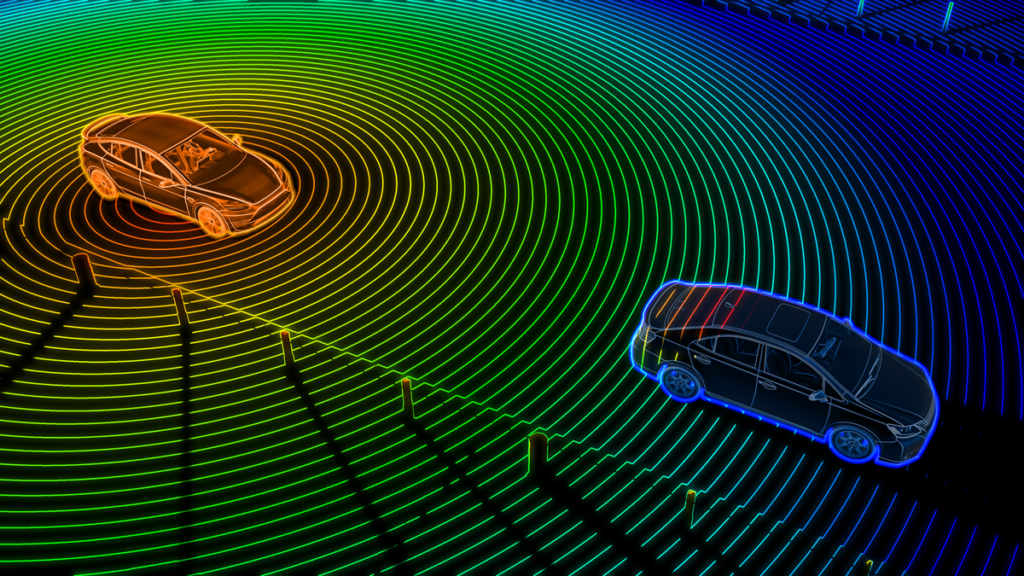Automotive autonomy has triggered enormous interest in various sensors in assisting data collection for both vehicle and road information. Among them, three-dimensional (3D) light detection and ranging (Lidar), a remote sensing method that uses laser light to measure distances and create precise 3D maps of the surroundings, provides high angular resolution and long detection range with accurate depth information and can add redundancy for vehicle safety. Therefore, Lidars have been developed extensively and adopted in an increasing number of vehicles. The Lidar market for automotive applications will grow to US$9.5 billion by 2034, according to IDTechEx‘s report “Lidar 2024-2034: Technologies, Players, Markets & Forecasts“.
Following a period of dedicated research by expert analysts, IDTechEx has published this report, which offers unique insights into the global 3D Lidar technology landscape and corresponding market. The report contains a comprehensive analysis of the market status and forecasts focused on the automotive industry, with the technology analysis also potentially applied to lidars for industrial automation, robotics, smart city, security, and mapping. Importantly, the report presents an unbiased analysis of primary data gathered via IDTechEx interviews with key players, and it builds on existing expertise in the transport, electronics, and photonics sectors.
This article discusses Lidar components, which are crucial to enable precise scanning, detection, sensing, and perception. Analyzing the Lidar components helps to understand their functionalities and the latest developments shaping the Lidar landscape.
Transmitter module
The transmitter module is responsble for emitting laser pulses towards the target scene. Different types of laser sources, such as those operating at 905nm or 1550nm wavelengths, offer unique advantages in terms of cost-effectiveness and safety. While 905nm Lidar systems dominate the market due to their economic benefits, 1550nm wavelengths are favored for their enhanced safety and longer detection ranges. Notably, the choice of laser source significantly influences the overall performance and cost of Lidar systems.
Receiver module
Conversely, the receiver module captures the reflected laser pulses and converts them into electrical signals for processing. Key advancements in receiver technology, including Single Photon Avalanche Diode (SPAD) and Silicon Photomultiplier (SiPM), have led to improved sensitivity and detection capabilities. These innovations are pivotal in enhancing Lidar performance and enabling applications such as long-range scanning and object recognition, although both have their limitations and challenges to solve.
Beam steering module
The beam steering module dictates the directionality of the emitted laser pulses, facilitating precise scanning of the target area. Lidar systems employ various beam steering techniques, such as mechanical scanning, MEMS-based scanning, and optical phased array (OPA). Each method offers distinct advantages in terms of scanning speed, angular coverage, and form factor, catering to diverse application requirements. 360° mechanical rotating LiDAR systems were dominant in the initial stages of development, particularly within the realm of Robotaxi technology. However, their widespread adoption in the automotive industry has been hindered by their high cost and reliability issues. As a result, semi-solid or hybrid mechanical beam steering technologies, including rotating mirror, MEMS, and (Risley) prism, are gaining traction. Among these approaches, the rotating mirror technology has gained increasing favor among many Tier 1 suppliers and OEMs thanks to its reliability and cost-effectiveness, particularly for single-axis scanning applications. Although prism technology has faded from prominence, it may still find utility in industrial applications. While MEMS technology possesses challenges such as irregular point clouds, increased workload due to fewer lasers, higher output intensity, MEMS mirror performance, and reliability concerns, MEMS continues to be utilized by several companies. Flash LiDAR, although popular, is primarily suited for short-range detection. Looking towards the future, OPA technology is viewed as an intriguing direction for LiDAR development, offering potential advancements in performance and functionality, while its low maturity and high costs prevent it from being adopted in practical application cases.
Control/processing module
The control module manages the operation of the LiDAR system, including algorithmic processing and data interpretation. Advanced signal processing algorithms generate point cloud models from raw sensor data, enabling accurate spatial mapping and object detection. As Lidar applications continue to evolve, ongoing research focuses on optimizing control algorithms to enhance detection accuracy and real-time processing capabilities.
 Lidar components.
Lidar components.
In essence, LiDAR hardware can be categorized into four primary modules: the transmitter module, receiver module, beam steering module, and control/processing module. Notably, the transmitter and receiver modules are often collectively referred to as the transceiver module.
Considerable attention has been focused on advancing the beam steering system, which is recognized as an important innovation in 3D Lidar technology. Many emerging LiDAR startups place significant emphasis on their unique beam steering solutions. However, it’s worth noting that the beam steering component profoundly influences the reliability of LiDAR systems and the consistency of generated point clouds. Conversely, aspects such as accuracy, detection range, and processing speed primarily hinge on the performance of the transceiver system, which also significantly impacts the overall cost of Lidar solutions. To further Lidar performance, the transceivers are the components which require more attention and improvements.
More detail on technology analysis, market forecast, supply chain understanding, player activity tracking, and commercial opportunities can be found in IDTechEx’s report “Lidar 2024-2034: Technologies, Players, Markets & Forecasts”.
To find out more about this IDTechEx report, including downloadable sample pages, please visit www.IDTechEx.com/Lidar.
For the full portfolio of market research available from IDTechEx, please see www.IDTechEx.com.
Dr Xiaoxi He
Research Director at IDTechEx
IDTechEx provides trusted independent research on emerging technologies and their markets. Since 1999, we have been helping our clients to understand new technologies, their supply chains, market requirements, opportunities and forecasts. For more information, contact [email protected] or visit www.IDTechEx.com.


